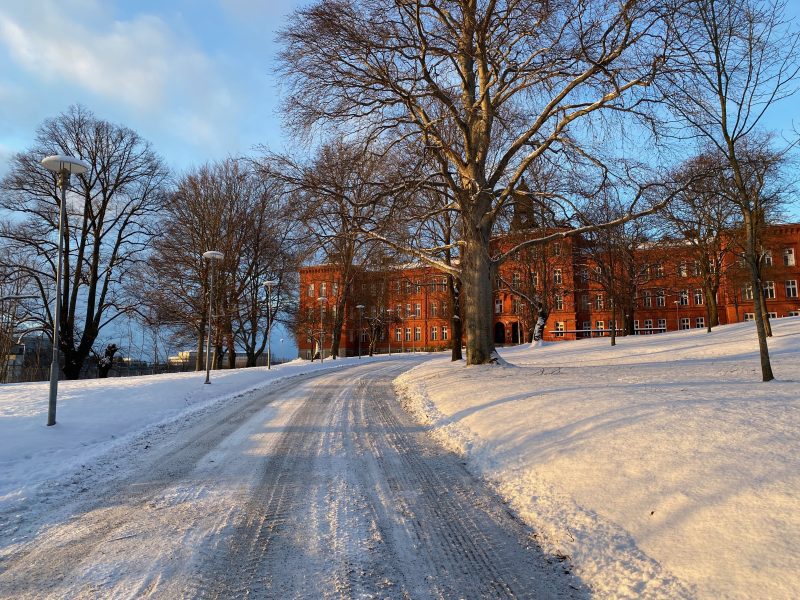
Conflict and climbing – a day in the life of a Global Health student.
Hej hej! I thought it might be useful to give an insight into a typical day on the Global Health masters course. For us, the year is divided into the time which we spend in classes, and the time in which we write our thesis. From September to the end of January, we complete the required modules (which can be found on the Global Health syllabus page here), and from February onwards we are writing our theses independently.
My first part of this series will be a typical day in the life during classes. The days can be very varied – including lectures to journal clubs to group work to study visits – but typically when in classes we spend 9am to 4pm in the Widerströmska building. Here’s a typical day of classes during the second semester, in our ‘Non-communicable diseases, injuries, disasters & conflicts’ course, which for us was the final course of the year (!).
Morning – Lecture (9am to 12pm)
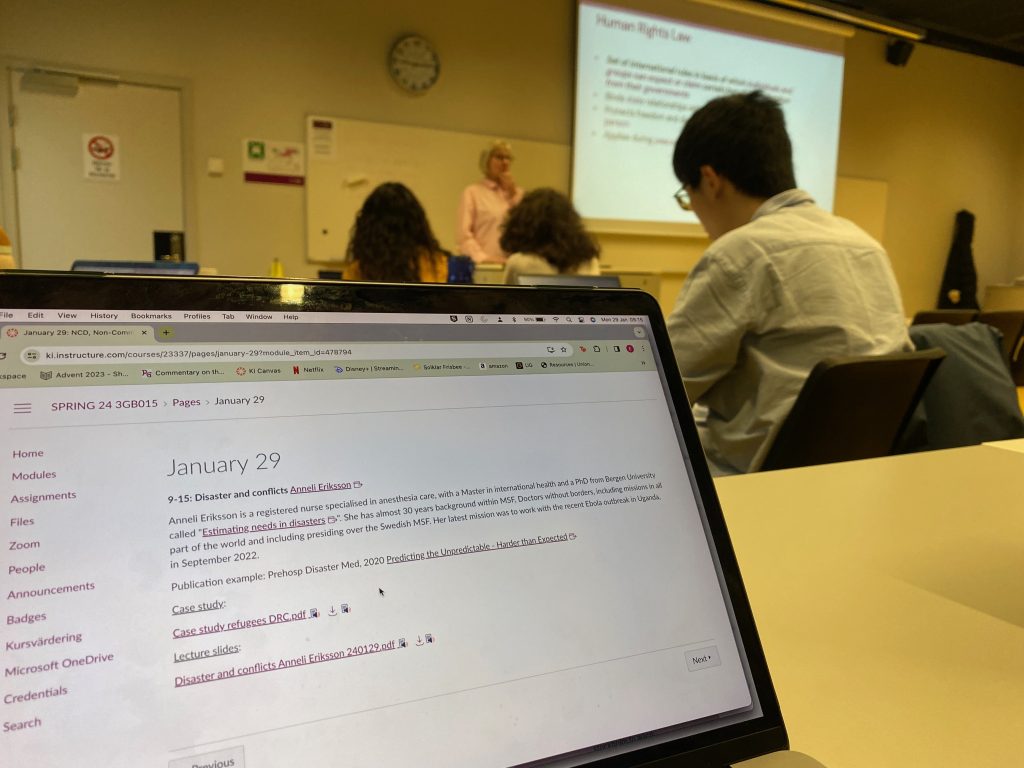
Today was a whole day spent studying health in conflict and emergencies, led by Anneli Eriksson, who has a wealth of experience both in researching disasters and health, and working in the field with MSF (Doctors without borders). The morning was spent in a lecture, which gave us a speedy but comprehensive overview on human rights, the laws of conflict and international enforcement of these, health needs during these events, and the roles of aid organisations in meeting these needs. Typically, we take notes during lectures, and are free to ask questions at any point. This is helpful to clarify certain points, or even get anecdotes from a lecturer’s personal experience working in the field. Most mornings for us begin at 9am, and finish at 12pm for a lunch break.
Lunch – Biomedicum (12pm to 1pm)
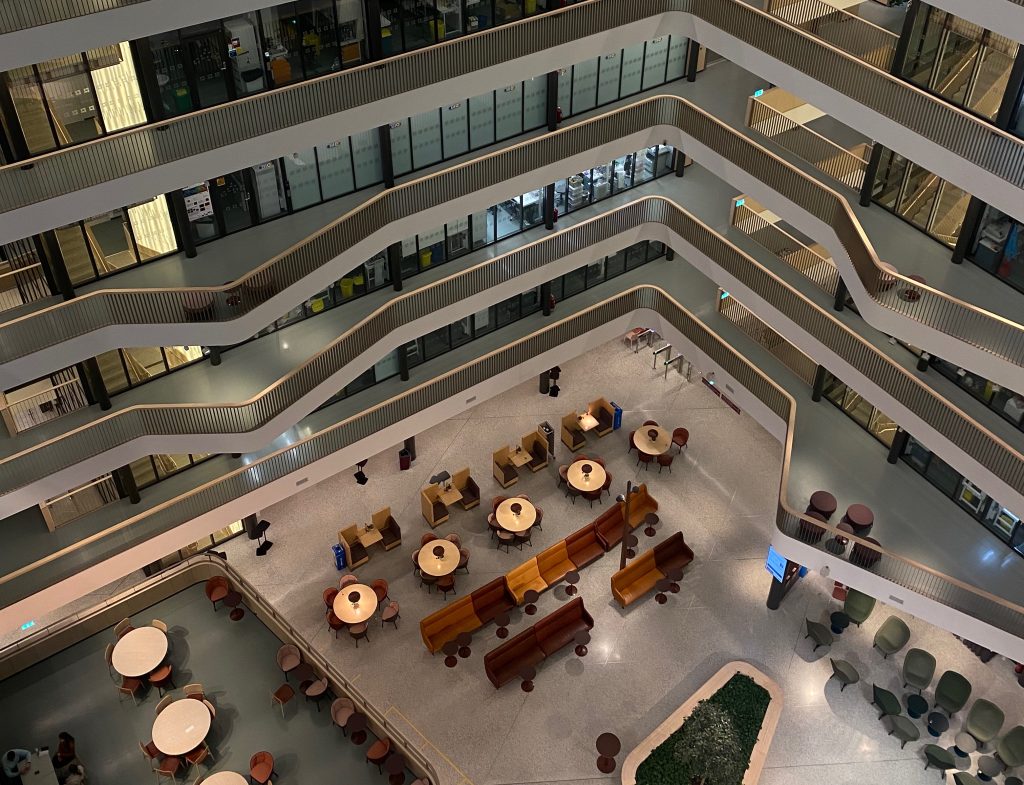
Lunch for me was at the Biomedicum, one of KI’s most recognisable buildings, with a couple of friends who also study Global Health. I will note that this isn’t what I’d usually do – I usually bring lunch, or go back to my apartment to grab food since I live in KI Residences Solna. However, the Biomedicum café has great food which is subsidised, so much cheaper than eating at a regular café, as well as very subsidised coffee for those with a KI card (15SEK!). I had a toasted sandwich, which was very delicious, and enjoyed sitting in the Biomedicum atrium which is a super nice place to eat or study.
Afternoon – Group activity (12pm to 3pm)
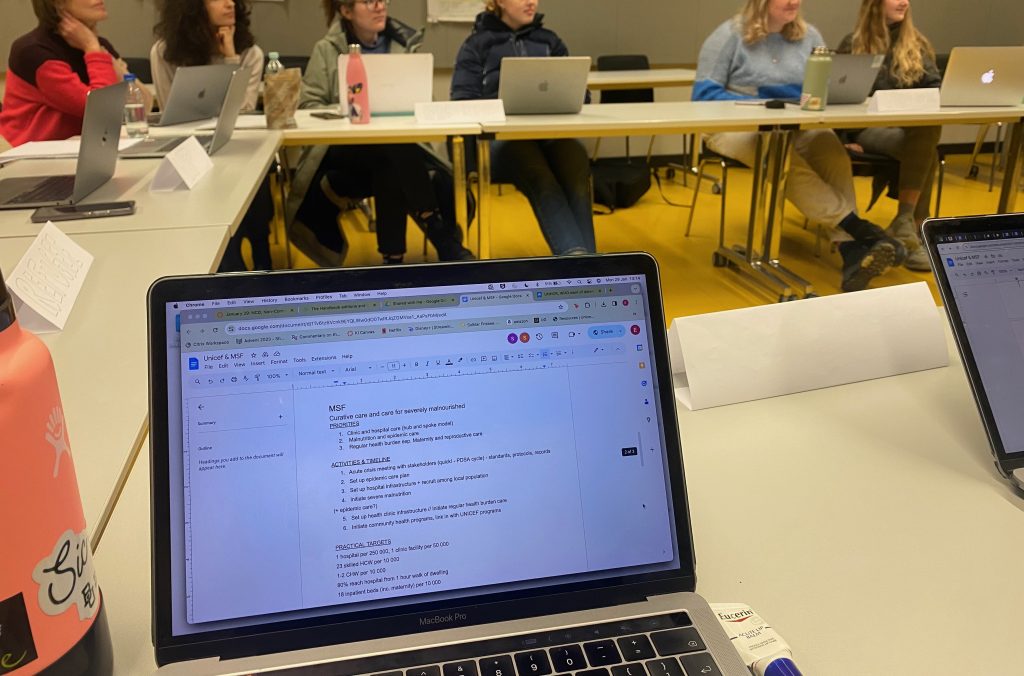
After lunch, it was back to the classroom to put what we’d learned during the morning into practise. We participated in a group exercise where we were split into teams, each of which represented a separate aid organisation or NGO, presided over by the UNHCR, which is the United Nations Refugee co-ordination agency. Organisations represented included MSF, the United Nations Food program, UNICEF, WHO, representatives from a national health ministry, and a representative for the refugee population. Our task was to design a refugee camp for a huge influx of displaced people, which provided basic necessities and safe accommodations for up to 40 000 people. This exercise was very interesting because it made it very clear to us how difficult and complex it can be to create solutions for such situations. We faced overlapping interventions between agencies, planned many sub-committee meetings to tackle specific issues such as healthcare and sanitation, and the difficulties of catering for the local population living near to a displaced persons camp. Overall, all who participated really enjoyed the afternoon activity, and we learnt a lot from the activity and from Anneli’s comments during the final meeting.
After class – climbing
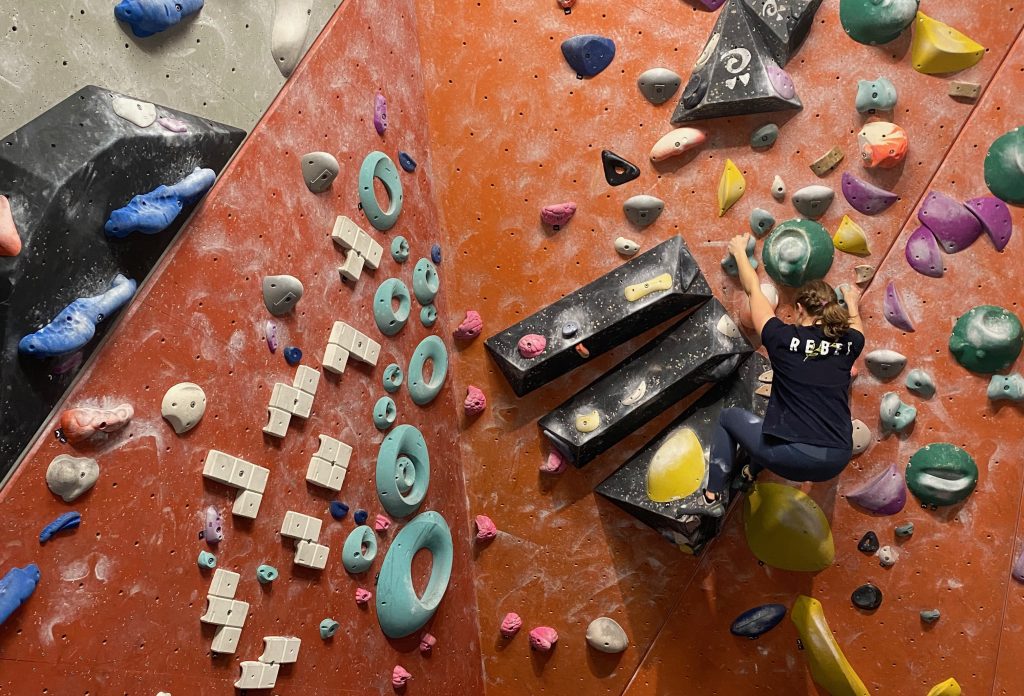
When you have class from 9am to 4pm most days, you learn to plan the rest of your life around these times, and for me this involved discovering new ways to get exercise which could be done when it’s dark and cold outside. So, my roommates and I started climbing. I climb in Solna, about 10-15 minutes away from campus, and find it a great way to fit movement into my day even when the weather isn’t great. It’s also a nice way to relax after class, before completing any work left to do in the evening.
Evening – everything else!
In the evening, I typically complete any assignments or thesis work that I need to get done, relax by myself or with my roommates, and try to get enough sleep to be awake enough for class the next morning!
Thanks for following along! Not every day looks like this, and days can often start at 10am or finish at 4pm, but hopefully this is an insight into a typical day in the life whilst completing this degree. See you next time, for a typical day during the thesis portion of the year. Hej då!

Emily - Global Health
Hi, I’m Emily! I’m from the UK, the USA and Malaysia, and I’m studying the Master’s in Global Health this year. I’m a medical student in the UK, and hope to work either in Emergency Medicine or Women’s Health, as well as in health policy development and implementation. In my free time, I love playing sports, thrift shopping, hiking and the outdoors, and trying out new cafés (all of which I have heard Stockholm is perfect for!). I’m excited to travel around Scandinavia this year, start some new sports, and explore the shops and cafés in Södermalm.

0 comments